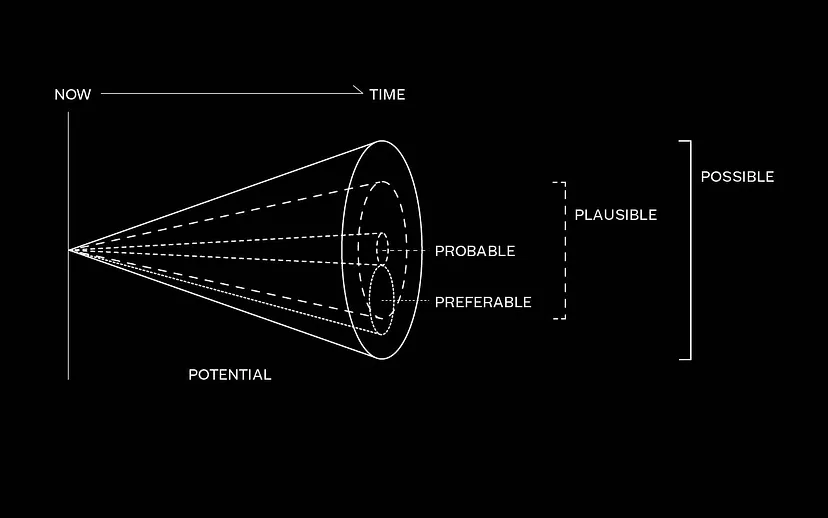Directed by Liam Young and written by Tim Maughan, Where the City Can't See is the first film shot entirely through laser scanning technology. The film is set in the Chinese-owned and controlled Detroit Economic Zone (DEZ). In a future not so far away, Google Maps, urban management systems and CCTV surveillance become active agents in mapping and ruling our cities (Cover: Where the City Can’t See, 2019).
Dystopia is not a place: it is a warning.
Whilst the terms utopia and dystopia may offer a distraction from reality and the bigger ‘what if?’ questions about our future, it can be useful to value the radical and speculative ideas they bring forward as a way of understanding key societal challenges threatening our future.
Dunne & Raby are a London-based design studio who utilise design as a tool to facilitate discussion between designers, industries and the public about the social implications of emerging technologies. In their book, Speculative Everything (2013), they present a taxonomy of futures in which speculative design can be found within one of four possible futures: probable, preferable, plausible and possible. The taxonomy of futures offers a refined boundary within which speculative design aims to operate. These futures can be viewed as lenses through which to better understand the ‘now’ and what the outcomes may be on the future. Outside of this taxonomy is where the realm of fantasy can be identified which is often misidentified as speculative.
Post-war housing was made with permanence as a solution to the turmoil and anxieties of war. At the time, Archigram was notably influential in their ability to ‘access’ and communicate with such a wide audience which transcended industries including music, art, and technology. Archigram were embracing mass production and lightweight materials that were ephemeral and of the moment, mobile and playful. In a context of brutalist housing blocks and public buildings this was the ‘radical’ of the time.
They introduced new ideas of what architecture could be without building. They left a spatial impression through their ability to risk-take and push boundaries.
Archigram realised that society was shifting and information systems, communication and the way we used technology were advancing rapidly. During this societal shift, the group quickly adapted, and computer-based technology became the forefront of the release Archigram 7 – a publication of loose papers which came folded together in a plastic bag.
This was an early demonstration of the relationship between technology and culture in which technologies produce culture and are produced by culture.
Speculative design offers many opportunities for those responsible for shaping cities to explore new boundaries, however it does carries many challenges notably in its value and purpose – what is it really for? According to Dunne and Raby, the key challenges faced by speculative design can be summarised into three categories: “market forces”, “atomization” and “pessimism”.
The creation of cities, physically and digitally, is narrowing in its ability to engage with wider audiences particularly those unrepresented in urban processes. ‘Accessible’ has become a buzzword, traditionally used in an unintentionally derogatory way which is something that speculative design sets precedent for. Speculative design doesn’t require extensive architectural knowledge or an understanding of construction and real estate to understand and make useful because its true value is within its encoded ideas.
